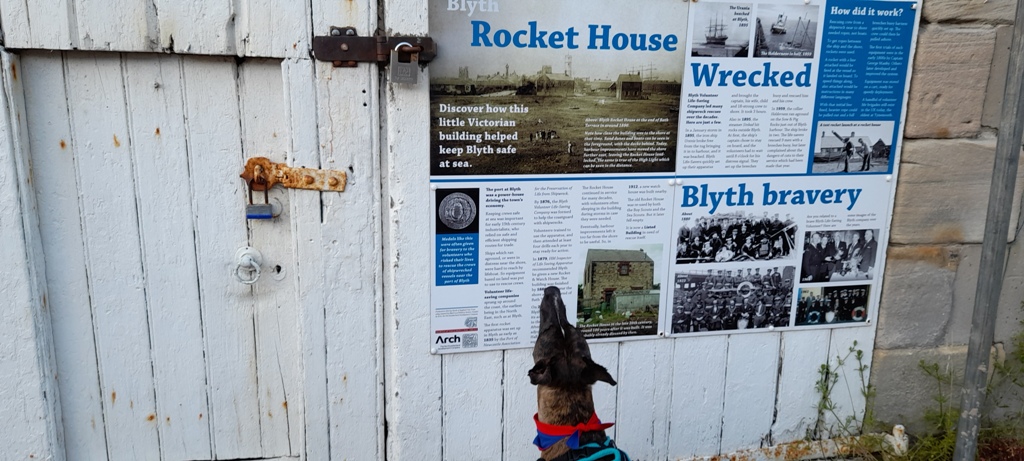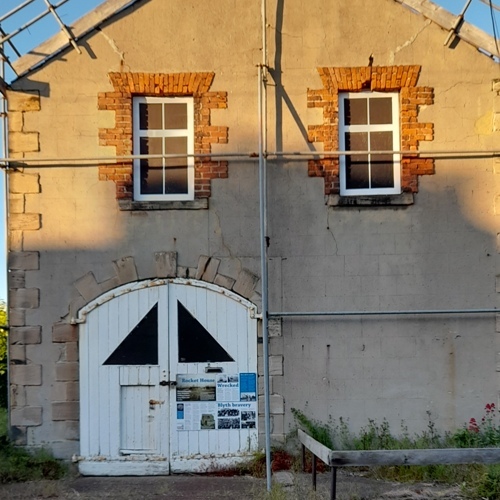Blyth Rocket House
If a ship ran aground in the UK, the rescue of the crew aboard was by a line that was tied between the ship and the shore. The line would enable each crew member to be pulled to safety using a life buoy, a ring that goes around the waist.
The success of the rescue was in the hands of rescuers being able to throw a rope to the stricken ship.
In 1807 Captain George Manby witnesses HMS Snipe run aground in Great Yarmouth only 46 metres off shore with the loss of 67 of the crew.
He experimented with using mortars as rockets as a better way to get a rope to the ships.
The mortar was big and heavy, so was usually mounted onto a cart and pulled to where it was needed by either horses or men.
February 1808 was the first recorded rescue using the Manby Mortar, with Manby himself in charge. The crew of seven were brought to safety from the Elizabeth, stranded off at Great Yarmouth.
It was estimated that by the time of Manby's death nearly 1000 persons had been rescued from stranded ships by the Manby Mortar.
Eventually Buildings or Rocket Houses were built to house the Mortars, trailer and the other rescue equipment. The first being built in Tynemouth, Tyne and Wear in 1865. There were over 300 rocket houses built around the UK coast.
Volunteers would often sleep in the building so they were ready in case of an emergency.
The Blyth Rocket House is in Bath Terrace and was built in 1880, although Blyth had been using the rockets since 1835.
After harbour upgrades the rocket house was no longer near the water's edge so was eventually retired in 1912.
The last time a rocket was fired on the north east coast was in 1963 and a new watch house was built instead.
Here are some rescues that are recorded on the information board attached to the building.
In a January storm in 1895, the iron ship Urania broke free from the tug bringing it in to harbour, and it was beached. Blyth Life-Savers quickly set up their apparatus and brought the captain, his wife, child and 18-strong crew to shore. It took 3 hours.
Also in 1895, the steamer Sinbad hit rocks outside Blyth. As first, the ship's captain chose to stay on board, and the volunteers had to wait until 8 o'clock for his distress signal. They set up the breeches buoy and rescued him and his crew.



